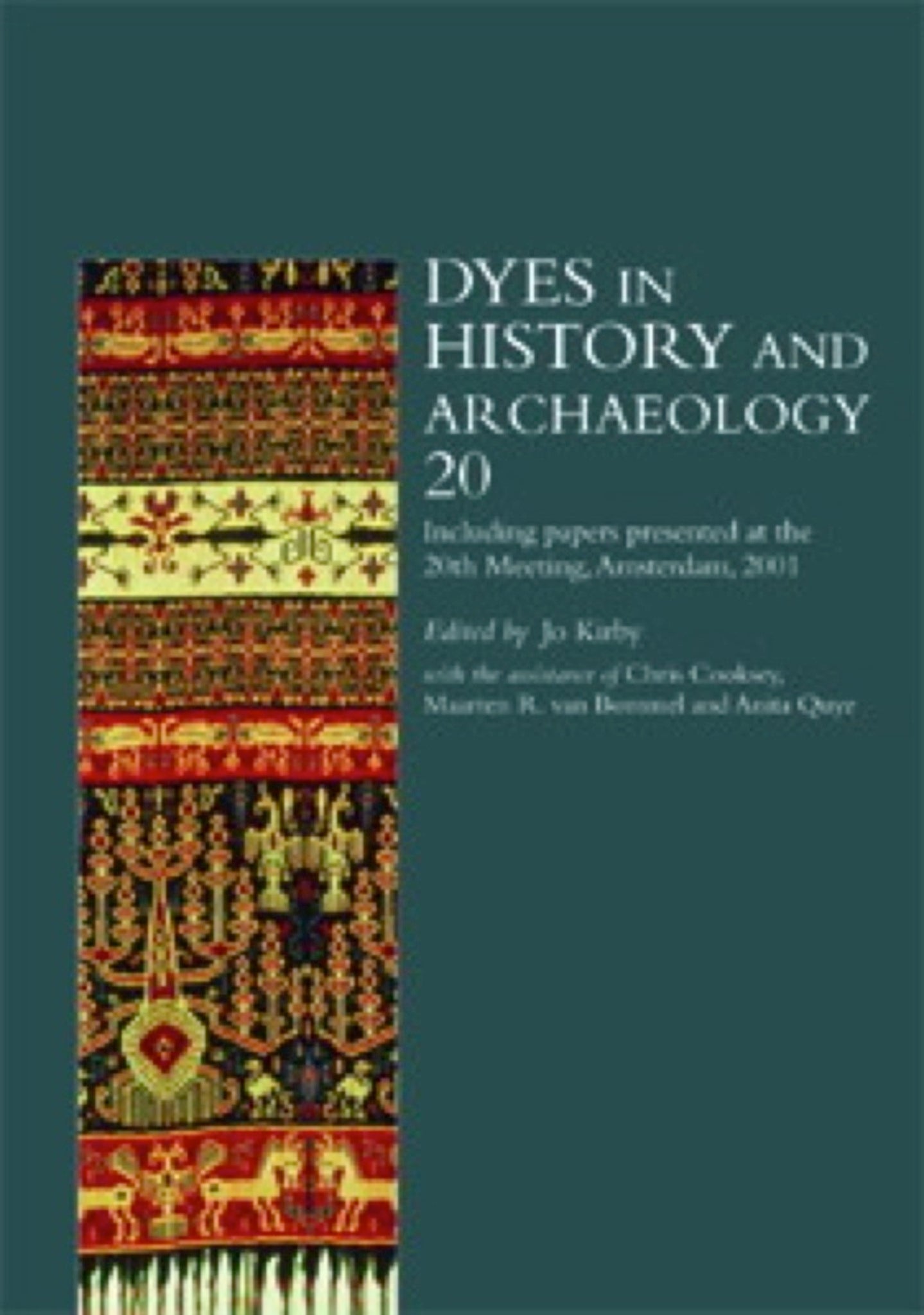We're sorry. An error has occurred
Please cancel or retry.
Dyes in History and Archaeology 20

Some error occured while loading the Quick View. Please close the Quick View and try reloading the page.
Couldn't load pickup availability
- Format:
-
01 April 2005

Until the 19th century, the dyes available to decorate all the objects of art and everyday life were obtained from naturally occurring raw materials. It was well known that some were better than others and from early times the necessity of assessing quality and avoiding falsifications was recognised. Following developments in synthetic organic chemistry, a vast number of new dyestuffs appeared; these also varied in quality and permanence and required testing. Historians, archaeologists, chemists and dyers then began to ask how the dyers of earlier times and other civilisations had carried out their craft. Today, conservators have questions too: how the dye and its method of application may affect the state of preservation of an object, and also the remedial measures that are necessary.
Over the centuries, analytical methods have developed from simply moistening the raw material with saliva to assess its dyestuff content to the identification of a dyestuff molecule by mass spectrometric analysis. Methods for the examination of dyestuffs have evolved in parallel with developments in analytical chemistry and ever more detailed information becomes available as techniques improve. The development of non-destructive methods has a particular relevance to historical artefacts and may grow in importance in the future.
These points are discussed in the papers presented at the 20th Meeting of the Dyes in History and Archaeology, held in 2001 at the Instituut Collectie Nederland, Amsterdam. They are illustrated further by discussions of the use of particular analytical methods and the development and use of a range of dyestuffs from shellfish purple to Malachite green; from Indonesian dyes to food colorants. Historical and conservation issues are also discussed including dyeing of prestigious textiles during the Nara era in Japan by a method that was subsequently forgotten, and the conservation of two historical Canadian textiles.

ART / Conservation & Preservation, Conservation, restoration and care of artworks, SOCIAL SCIENCE / Archaeology, Archaeology

...a copy should certainly be held in the new central library�good reading for...[dyers] who are interested in the intricacies of dyeing history and technology.
Editorial
Contributors
A concise history of dye analysis
Andre Verhecken
Possible future developments in the analysis of organic dyes
Jan Wouters
The analysis of dyes with HPLC coupled to photodiode array and fluorescence detection
Maarten R. van Bommel
Studying dyes by time-of-flight secondary ion mass spectrometry
Francois Delamare and Monique Repoux
Analysis of coloured compounds found in natural eyes by thermospray liquid chromatography-mass spectrometry (TSP LC-MS) and a preliminary study of the application to analysis of natural dyes used on historic textiles
Nobuko Shibayama, Ryohei Yamaoka and Masanori Sato
TLC and HPLC analysis on red and violet cotton yarns of Indonesian textiles
Regina Hofmann-de Keijzer and Maarten R. van Bommel
Dye analyses helped to determine the treatment of two historically important textiles
Sharon Little
Stabilization of cellulosic textiles decorated with iron-containing dyes
Gerald Smith, Rangi Te Kanawa, Ian Miller and Glen Fenton
Components of mordants and the silk fabrics treated with them
Masako Saito, Mizuho Uehara and Kazuki Yamazaki
Madder and gromwell dyeing with alum in the Nara era, 8th century, in Japan - duplicate mordanting
Jiro Komiyama, Mario Suematsu and Shojiro Ogawa
Historical dyes in Poland and their revival
Katarzyna Schmidt-Przewozna
Description and analysis of four Moroccan uses of saffron: saffron, body and sexuality, art and ritual
Jerome Dupont
Processing of indigo plants and dyeing with indigo in Japan: impressions of a visit in autumn 2000
Ursula Klingelfuss-Schneider
Colour variations in Tyrian purple dyeing
Chris J. Cooksey and Roy S. Sinclair
The first optimal all-murex all-natural purple dyeing in the eastern Mediterranean in a millennium and a half
Zvi C. Koren
The purple fermentation vat: dyeing or painting parchment with�Murex trunculus
Inge Boesken Kanold
Chinese green, an enduring mystery
Chris Cooksey, Alan Dronsfield and Jo Kirby
It happened by chance: the discovery of Malachite green
Chris Cooksey and Alan Dronsfield
Dyes (and pigments) as food additives (and adulterants)
Brian H. Davies
The compatibility of transmission electron microscopy and micro-raman spectroscopy: application to parchment illustrations
Peggy Fredrickx, Peter Vandenabeele, Jan Wouters, Luc Moens and Dominique Schryvers
A mass spectrometric study of the red naphthol PR170 as pigment and in acrylic emulsion paint
Beatrice Marino, Tom Learner, Jerre van der Horst and Jaap J. Boon
Recent publications concerning the analysis and history of dyes: abstracts of books and papers received before July 2003
Compiled by Penelope Walton Rogers



